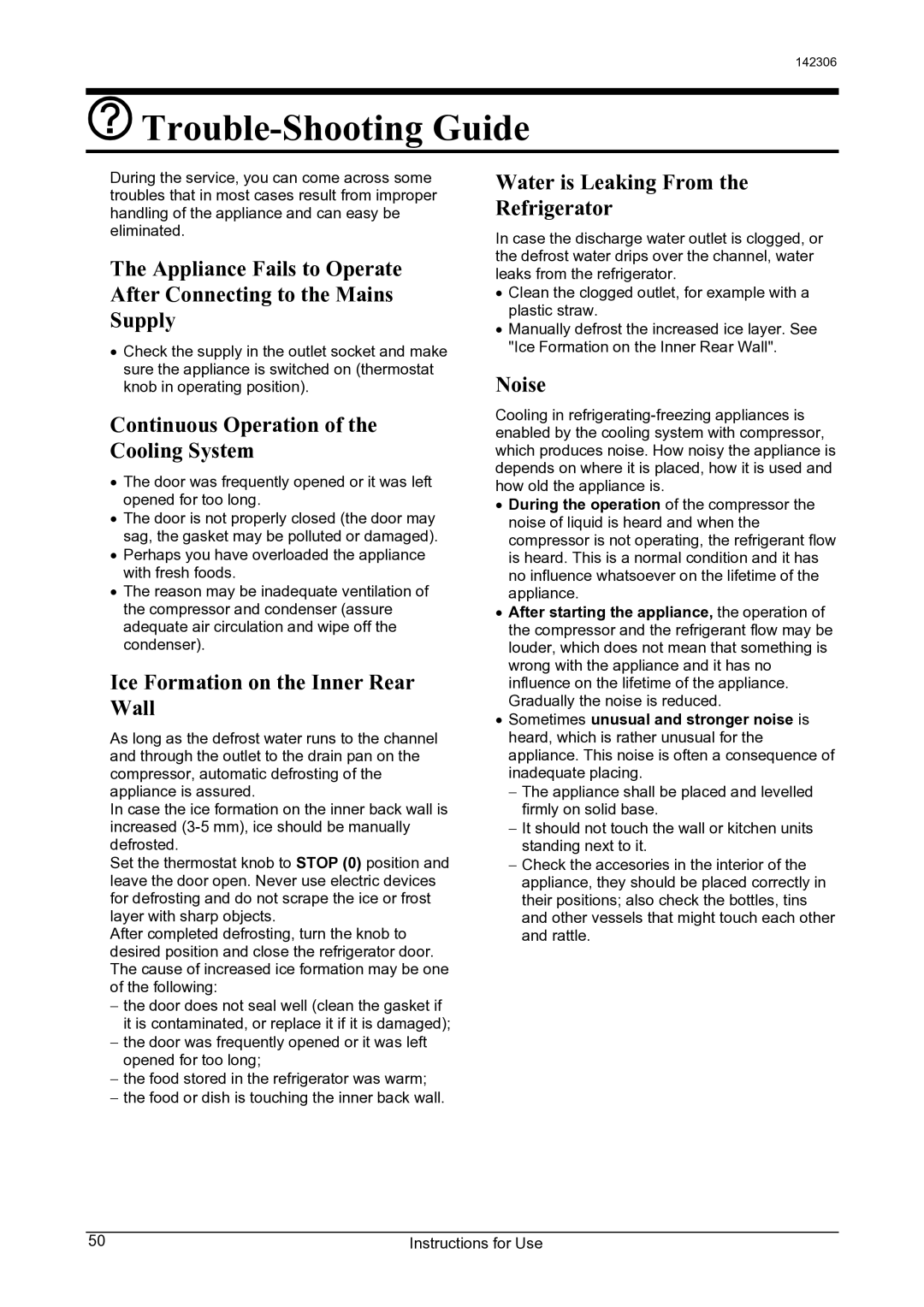142306 specifications
The Smeg 142306 is a remarkable appliance that combines style, functionality, and innovative technology, making it an ideal addition to modern kitchens. Renowned for its sleek Italian design, this refrigerator exemplifies Smeg's commitment to quality and aesthetic appeal.One of the standout features of the Smeg 142306 is its spacious interior. With a generous capacity, it provides ample space to store a variety of food items and beverages. The refrigerator is thoughtfully designed with adjustable shelves, allowing users to customize their storage options to accommodate different sizes and shapes of items. This versatility ensures that everything from large containers to delicate produce can be stored efficiently.
In terms of technology, the Smeg 142306 incorporates advanced cooling systems that ensure optimal temperature regulation. The fridge is equipped with a multi-flow cooling system that distributes cold air evenly throughout the interior, preventing hotspots and ensuring that all food items remain fresh for longer periods. Additionally, the No Frost technology eliminates the need for manual defrosting, making maintenance hassle-free.
Energy efficiency is another key characteristic of the Smeg 142306. It carries an impressive energy rating, which not only helps reduce electricity bills but also minimizes environmental impact. The appliance is designed with LED lighting that not only illuminates the interior but also consumes less energy compared to traditional lighting options, further enhancing its eco-friendly attributes.
The Smeg 142306 also boasts a range of user-friendly features that enhance convenience. The integrated digital controls allow for precise temperature adjustments, while the clear, intuitive interface makes it easy to monitor settings and make changes. The refrigerator's sleek exterior is available in various colors, allowing homeowners to choose a model that complements their kitchen décor.
Furthermore, the Smeg 142306 is designed with durability in mind. Constructed from high-quality materials, the unit promises longevity and consistent performance over time. Coupled with its stylish aesthetics, it serves not only as a functional appliance but also as a centerpiece in any kitchen.
In summary, the Smeg 142306 is a top-of-the-line refrigerator that combines cutting-edge technology with Italian design. Its spacious interior, energy efficiency, and user-friendly features make it an excellent choice for those looking to elevate their kitchen experience while enjoying the benefits of reliable and stylish refrigeration. With the Smeg 142306, homeowners can be assured of a product that reflects their taste and meets their daily needs.

